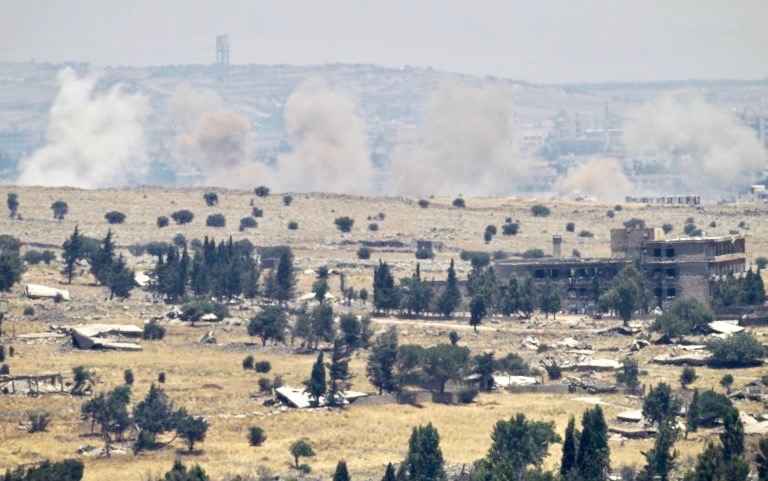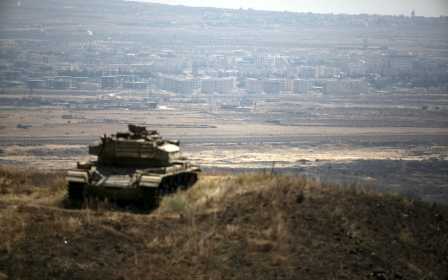Israel targets Syria for second day after stray fire hits Golan

Israeli forces fired on Syrian government positions after projectiles from the war-torn country hit the occupied Golan Heights on Sunday, the army said, in the second such exchange in two days.
The military "targeted two artillery positions and an ammunitions truck belonging to the Syrian regime," a statement read, noting the army had also ordered Israelis to keep away from open areas near Quneitra, where internal fighting was heavy.
Hours earlier, Israeli Prime Minister Benjamin Netanyahu addressed the Syrian spillover and Israeli retaliation that took place on Saturday and reportedly resulted in the death of two Syrian soldiers.
"We will not tolerate any spillover or trickle whatsoever - neither mortars nor rockets, from any front. We will respond strongly to any attack on our territory or our citizens," Netanyahu said at the start of a cabinet meeting.
Israel has conducted multiple air strikes in Syria since that country's civil war erupted in 2011, most of which it has said targeted arms convoys or warehouses of its Lebanese arch-foe Hezbollah, which is a key supporter of the Syrian government.
"We also view with utmost gravity Iran's attempts to establish itself militarily in Syria as well as its attempts to arm Hezbollah - via Syria and Lebanon - with advanced weaponry," Netanyahu said on Sunday.
Israel seized 1,200 square km of the Golan from Syria in the Six-Day War of 1967 and later annexed it in a move never recognised by the international community.
Around 510 square km of the Golan are under Syrian control.
The Israeli side of the Golan Heights has been hit sporadically by what is thought to be stray fire from fighting between forces loyal to Syria's government and rebels.
Syria and Israel are still technically at war.
New MEE newsletter: Jerusalem Dispatch
Sign up to get the latest insights and analysis on Israel-Palestine, alongside Turkey Unpacked and other MEE newsletters
Middle East Eye delivers independent and unrivalled coverage and analysis of the Middle East, North Africa and beyond. To learn more about republishing this content and the associated fees, please fill out this form. More about MEE can be found here.




